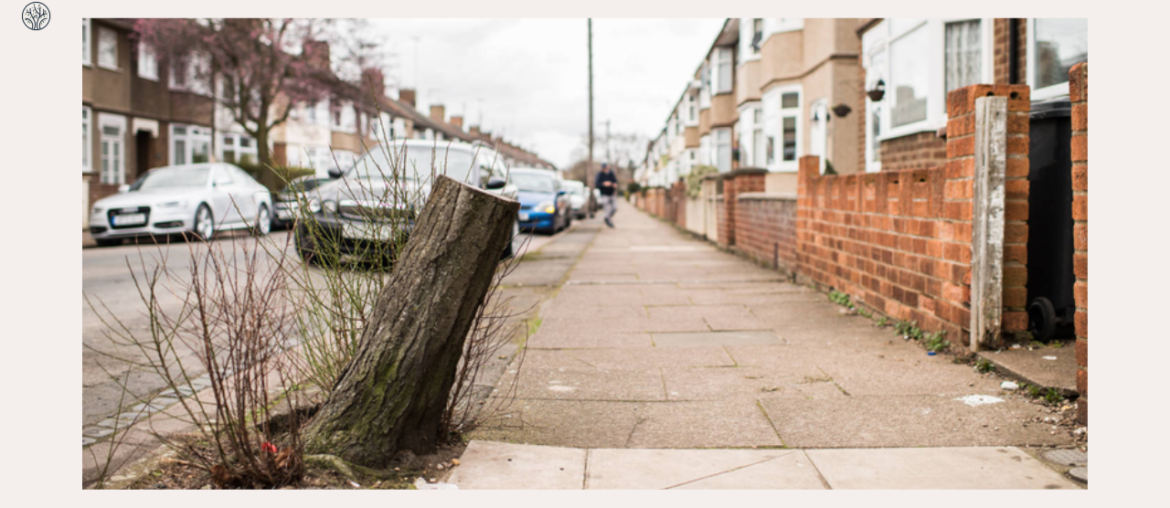Depending on where you live and what kind of trees you have, you may need permission from the relevant authorities to legally remove a tree. But what trees can be cut down without permission?
This article will reveal the answer and discuss what factors determine their eligibility. Read on and equip yourself with laws and regulations that govern tree removal to avoid fines, penalties, or legal actions.
- Dead Trees
- Fallen Trees
- Trees Posing Danger
- Young or Non-Significant Trees – Below 3m in Height
- Trees Near Home Foundations (within 3m)
- Trees in Fire Danger Zones (within 10m of your home)
- Non-Native or Invasive Trees
- Unregulated Trees
- Permission Requirements by Region or State
- Risks and Penalties Associated with Unauthorized Tree Removal
- FAQs
- The Bottom Line
Dead Trees
One of the most obvious cases where you can cut down a tree without permission is when the tree is dead. A dead tree is not only useless but also dangerous. It attracts pests and diseases, falls over unexpectedly, or causes damage to property or injury to people. Therefore, removing a dead tree as soon as possible is advisable.
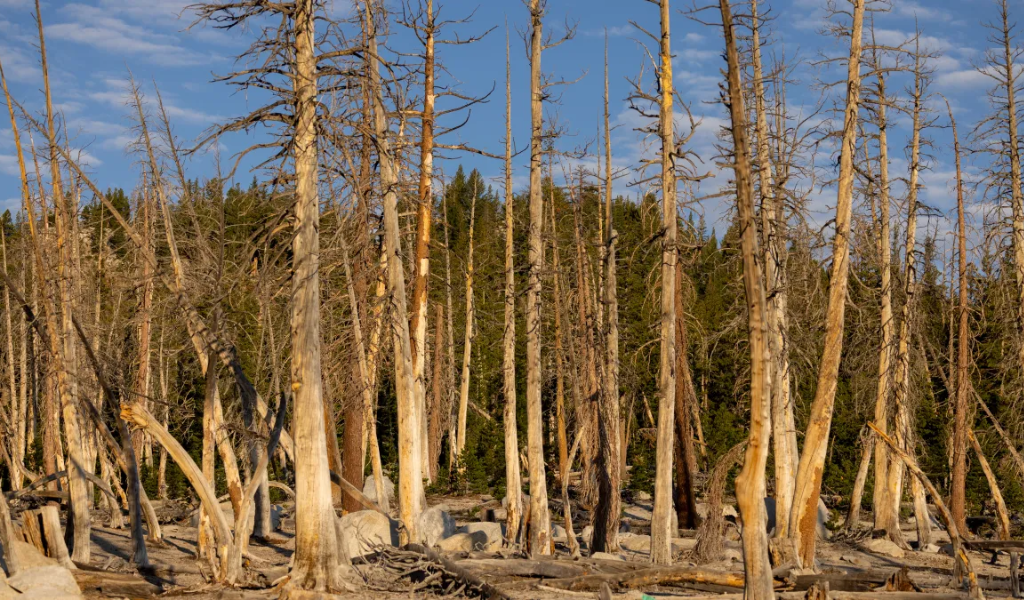
However, before cutting down a dead tree, you need to ensure that the tree is indeed dead and not just dormant or stressed. A simple way to check if a tree is over is to scratch a small piece of bark off a branch and look at the underlying tissue. If the tissue is green and moist, the tree is alive. In contrast, the tree is dead if the tissue is brown and dry.
Another way to check is to look for signs of life, such as buds, leaves, flowers, or fruits. Some trees may have dead branches but still have living trunks or roots. In this case, consult an arborist or a tree expert to decide if the tree can be saved or needs removal.
Fun fact: Humans cut down 42 million trees daily – an enormous number that brings countless consequences, such as deforestation, habitat destruction, climate change, and more. Therefore, you must consider carefully before cutting any tree.
Fallen Trees
Another case where you can cut down a tree without permission is when the tree has fallen over due to natural causes. A fallen tree can block roads, damage buildings, or create hazards for people and animals. Thus, we should remove it immediately.
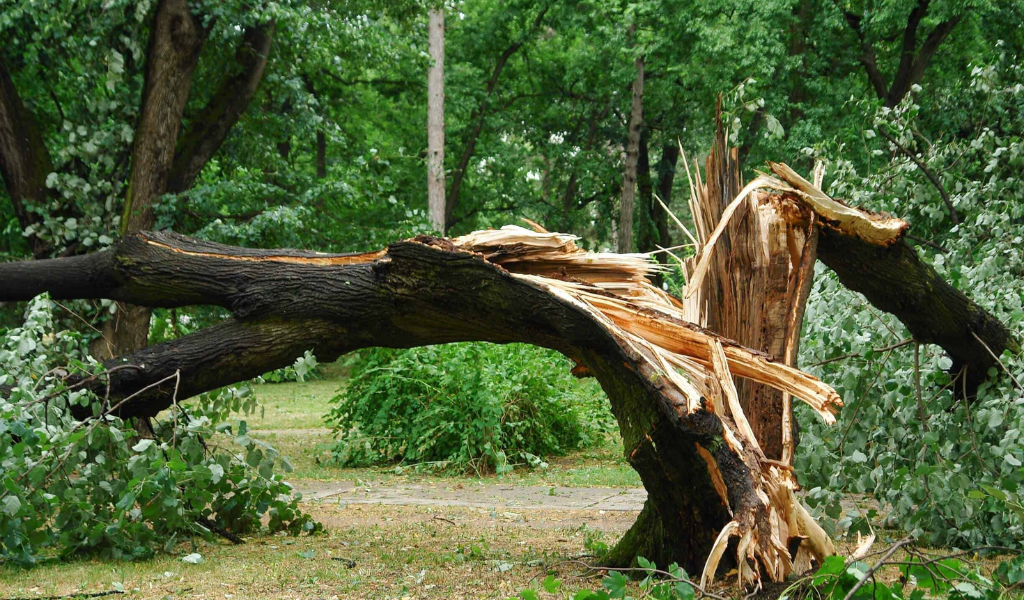
Before cutting the tree, check whether it is protected by any laws or regulations prohibiting its removal. For example, some trees may be subject to a Tree Preservation Order (TPO), which is a legal document that protects specific trees in any way without permission from the local council. You may face fines or prosecution if you remove a protected tree without approval.
Protected trees also include those in conservation areas (areas of special architectural or historical interest designated by the local council) to preserve their character and appearance.
Trees Posing Danger
Sometimes, trees become dangerous due to structural defects such as leaning trunks, compromised roots, cracked stems, hollow cavities, or decayed wood. These defects may weaken the stability and integrity of the tree and make it prone to failure or collapse.
A simple way to check if a tree is dangerous is to look for signs of damage or distress, including broken branches, exposed roots, fungi growth, insect infestation, or abnormal swelling.
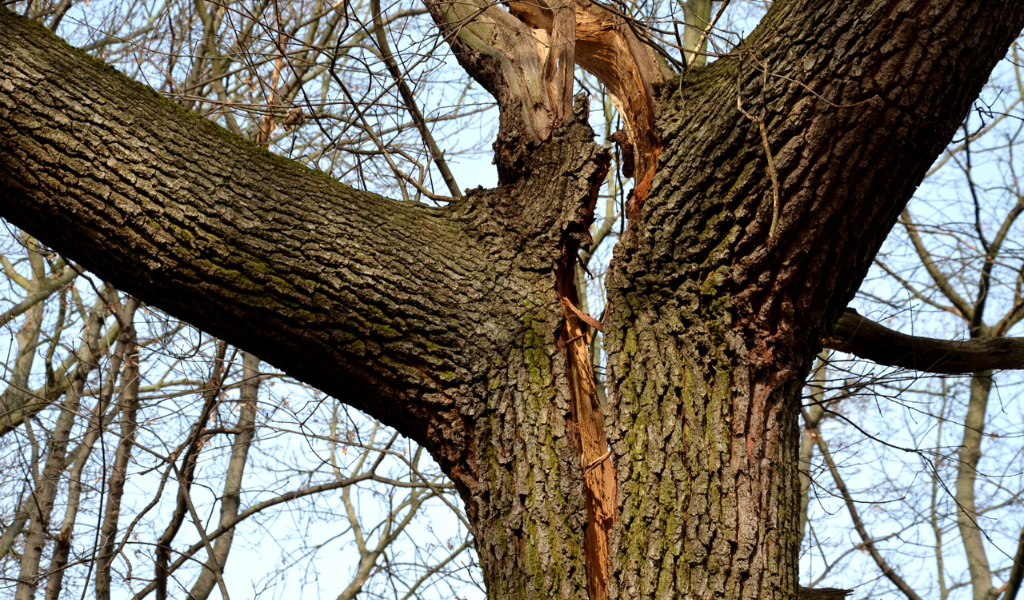
Otherwise, check if a tree is dangerous by hiring an arborist or a tree expert to conduct a professional assessment of the tree’s condition and risk level. They have various tools and techniques to evaluate the tree’s health and structure.
After checking, they will provide a written report or a certificate that confirms the tree’s danger and recommends the best course of action.
Young or Non-Significant Trees – Below 3m in Height
What trees can be cut down without permission? An answer that might surprise you is young or non-significant trees. This group includes trees that have not reached a specific size or age, making them valuable for the environment or community.
A young or non-significant tree is usually below 3m (10 feet) in height, although this may vary depending on the local laws and regulations. Yet, some trees may have protection from federal laws like the Endangered Species Act.
Trees Near Home Foundations (within 3m)
Trees sometimes cause homeowners problems by growing too close to their home foundations. It creates issues such as cracking, shifting, or settling the foundation due to root pressure, soil movement, or moisture changes.
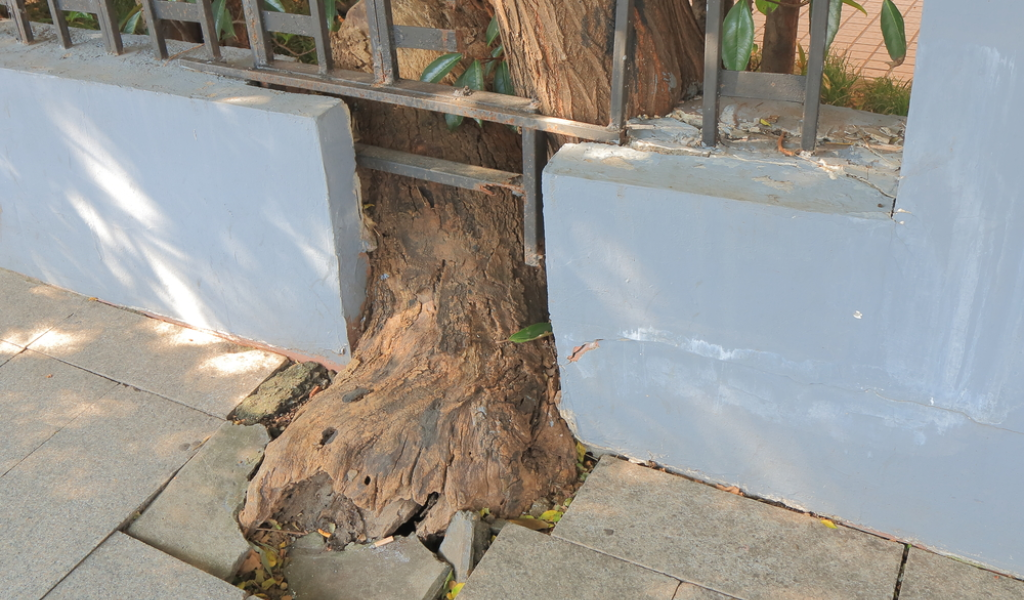
Moreover, trees near home foundations can damage pipes, wires, or cables that run underground or along the walls. Therefore, tree removal is crucial to prevent further damage or repair existing damage. Before you cut down a tree near your home foundation, ensure that the tree is indeed causing harm and not just a nuisance.
In many parts of Australia, you don’t need a permit to remove or trim a tree for safety reasons. Keep a distance of three meters from a large tree with invasive roots when it’s close to a house.
Trees in Fire Danger Zones (within 10m of your home)
Can I cut down a tree in front of my house? The answer varies. Those who live in an area with a risk of bushfires have permission to clear away trees and plants within 10 meters of their home. Different states and councils have rules for this, and they often provide maps to show which areas are at risk of bushfires.
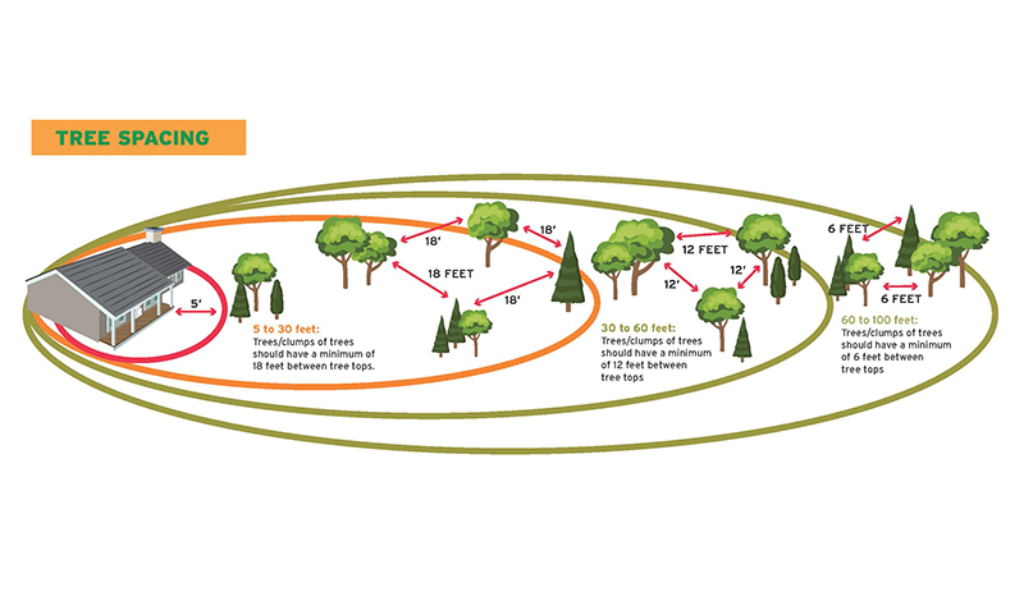
To ensure you’re following the proper rules, check your local guidelines on whether you need to remove trees to protect your property from bushfires. Most likely, you’ll also get updates and instructions from the Fire & Emergency Services department or other local authorities about how to clear the vegetation safely.
Non-Native or Invasive Trees
One category of trees that you can remove without permission is non-native or invasive trees. These trees are from other regions or countries and have harmed the native ecosystems. They may compete with native plants for resources, spread diseases, or disrupt natural processes.
Non-native or invasive trees are usually not protected by law. That means you can remove them without needing approval or a permit. Some locals even encourage property owners to identify and get rid of these invasive, non-native plants.
For example, non-native invasive trees and shrubs in Australia include the Alligator apple, sweet acacia, African Olive, Coral tree, Brazilian Cherry, and Camphor Laurel. Since it’s vital to protect native plants and prevent invasive species from spreading, you usually won’t need any special permit or approval to remove these trees.
Unregulated Trees
Another category of trees that can be cut down without permission is unregulated trees. These are not subject to any specific laws or regulations regarding their removal. They may be small, young, common, or non-significant in terms of environmental or historical value. Some examples of unregulated trees are pine, birch, and maple.
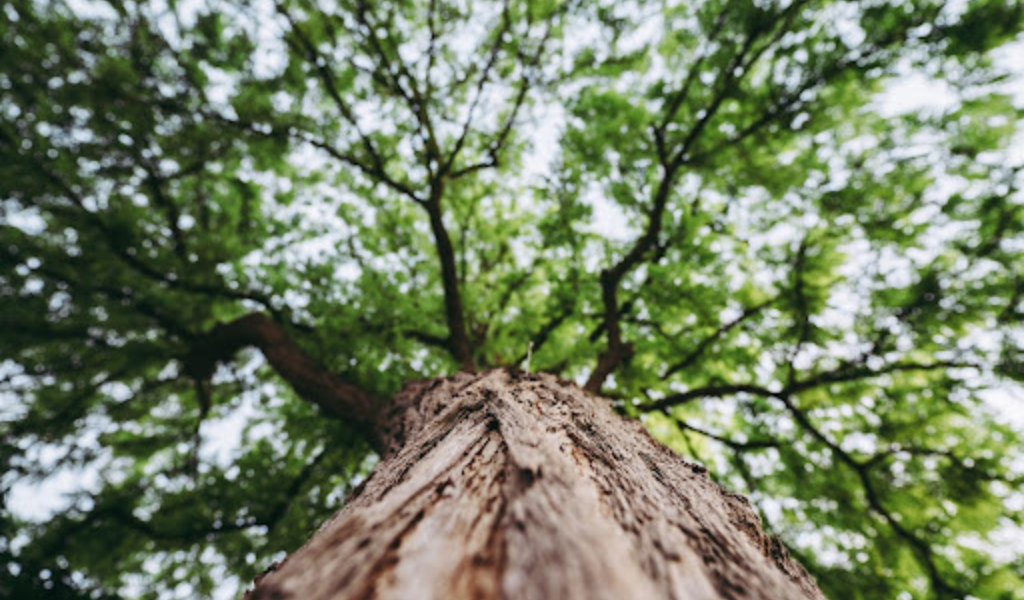
Unregulated trees can be removed by anyone who owns the land where they grow without needing a permit or notification. However, you should follow some best practices when removing them, such as ensuring safety for people and property and planting new trees to compensate for the loss.
Permission Requirements by Region or State
While you can remove some trees without permission, you still need a permit or approval from local authorities in some cases. Generally, we need removal permission for the following:
- Trees are subject to a Tree Preservation Order (TPO)
- Trees located in a Conservation Area
- Trees that are over a specific diameter or volume threshold
- Trees that are protected by a legal covenant
- Trees that are part of a new development project
To find out if a tree requires removal permission, check with the local council or the relevant government department before proceeding with any work. The application process may involve filling out a form, paying a fee, providing supporting documents (such as photos or reports), and waiting for a decision.
To display how the permission requirements vary by region or state, here are some examples from different countries:
In the UK, permission to remove any tree subject to a TPO or located in a Conservation Area. It also applies to any tree over 3 inches in diameter at 1.5 meters above ground level unless it is dead, dying, dangerous, or exempt. The penalty for tree removal without permission can be up to £20,000 per tree.
In Australia:
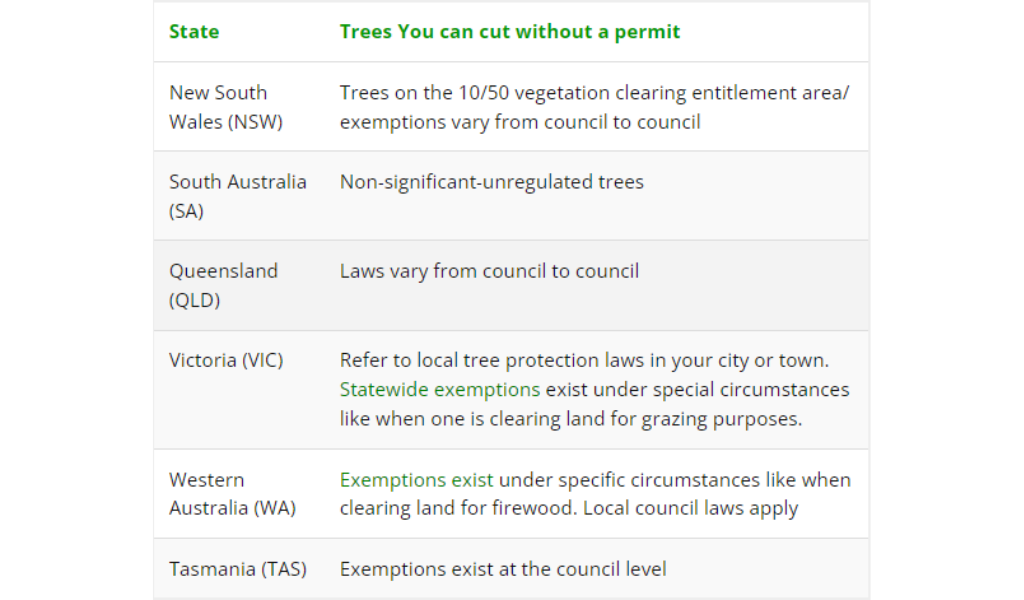
Meanwhile, in the US, permission requirements vary by state and city. Still, you need permission to remove any tree that a Tree Ordinance protects. Otherwise, you might get a penalty of up to $10,000 per tree.
Risks and Penalties Associated with Unauthorized Tree Removal
Removing a tree without permission can have serious legal and environmental consequences. Some risks and penalties associated with unauthorised tree removal are:
- Fines and prosecution: If you don’t know what trees can be cut down without permission, you might get fines and legal action from the authorities. The penalties include imprisonment, community service, or restitution.
- Damage and liability: Moving a tree without permission also causes damage to the property, the surrounding vegetation, the soil, the wildlife, and the public infrastructure. The person who removes the tree may be liable for any injury caused to others or their property and for any restoration or repair costs.
- Loss of benefits: Tree removal without permission can result in the loss of various benefits trees provide, such as oxygen production, carbon sequestration, air purification, etc. These benefits may take years or decades to recover or replace.
One way to avoid these risks and penalties is to hire an experienced tree removal company. It will bring expertise, experience, compliance and permits, insurance and warranty. Don’t worry about the price because we’ve compiled a list of free tree removal options, so check it out!
FAQs
What happens if we cut down all trees?
Cutting down all trees would devastate the planet and its inhabitants. Some of the consequences would include:
- Without trees, oxygen levels would drop immensely, making breathing harder and causing health problems.
- Carbon dioxide levels would rise dramatically, accelerating climate change and its impacts.
- Water availability and quality would decline, affecting agriculture, industry, and human consumption.
- Soil erosion would increase, leading to land degradation, desertification, sedimentation of waterways, and loss of fertility.
- Many species would lose their homes and resources, leading to extinctions and reduced ecosystem services.
Is It Illegal to Cut Down Trees in the Woods?
The legality of tree cutting can vary and is often influenced by property ownership. If you own the property, there may still be local regulations concerning tree cutting and replacement.
Many cities and counties place a strong emphasis on preserving their tree canopy. Explore the rules and permissions related to tree cutting on your property by contacting your local city or county land use department.
Do I Need a Permit to Remove a Tree from My Yard?
The need for a tree-cutting permit varies based on your local council regulations. It’s permissible to remove dead trees, fallen trees, or trees within 3 – 5 meters of your home without prior approval.
To find out whether you require approval, consult your local council laws or seek guidance from a licensed tree expert when requesting a quote for the job.
The Bottom Line
Trees are essential and valuable resources that should be respected and cared for. Knowing what trees can be cut down without permission allows you to avoid the risks and penalties associated. Follow us for more knowledge and tips to ensure a safe and responsible tree removal process.

